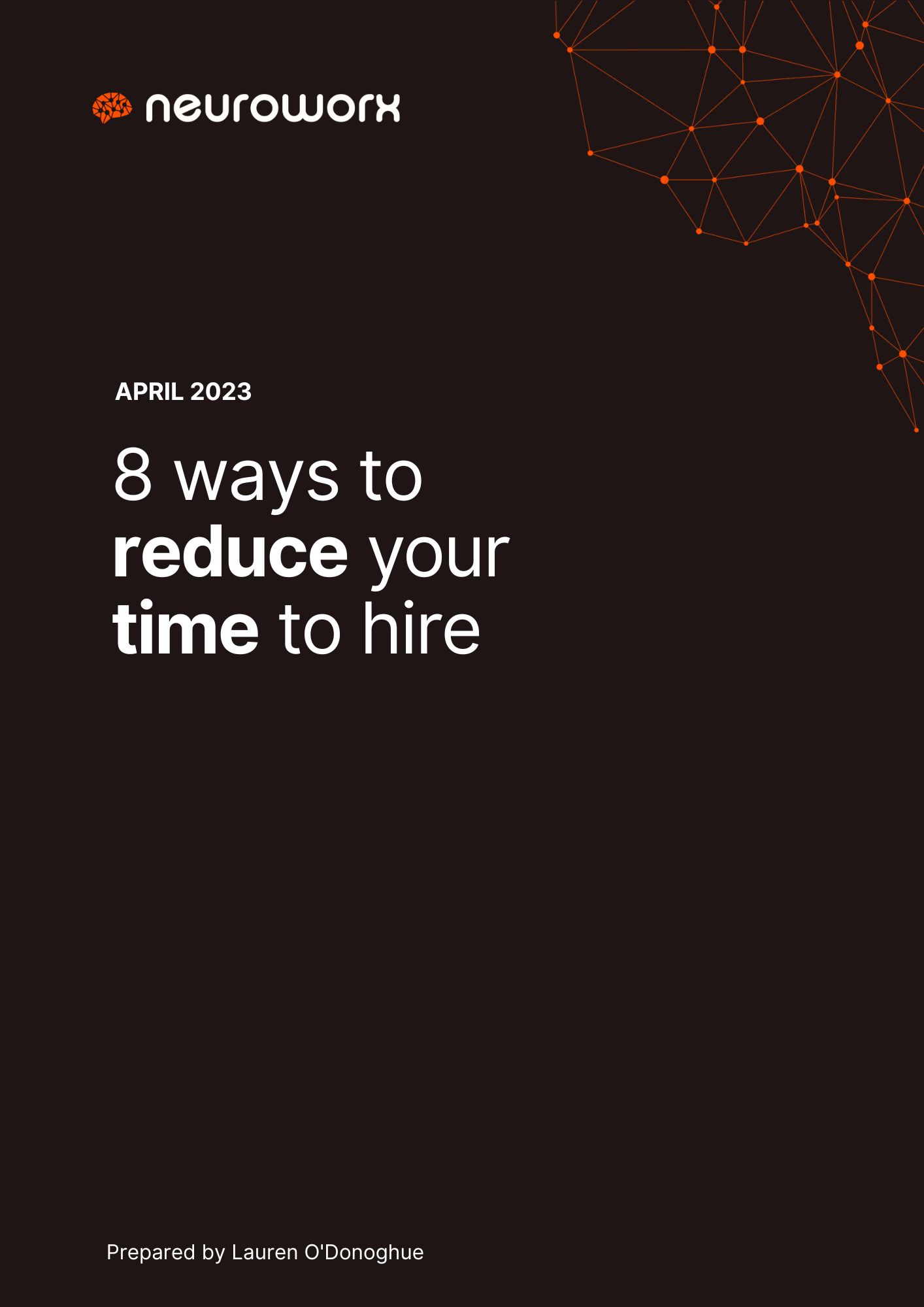Reducing Your Time To Hire In 2023
Cut down on the number of days between a candidate applying for a job and accepting it with these 8 simple changes.
What's Inside?
Time to hire is often used as a way to gauge the efficiency of a recruitment process. We have put together this guide to help you understand the full impact of a lengthy time to hire, while offering 8 simple changes you can make to ensure you get the quality candidates your business needs — in the shortest amount of time possible. Some examples include:
- Benchmarking your current time to hire with simple metrics
- Revisiting and revamping your careers page
- Assessing candidates at the right point
What is time to hire?
Time to hire is an important metric that companies use to measure their recruitment process.
It is the time frame between when a company identifies a need for an employee and when the employee actually starts working.
By measuring this metric, companies can ensure that they are sourcing efficiently and quickly filling open positions with qualified applicants.
Why is time to hire important?
Time to hire serves as a benchmark for recruiting teams; if one team can fill vacancies faster than another, it means their processes are more efficient or they have better access to potential employees.
With a lengthy and drawn-out hiring process, you risk losing qualified candidates and increasing the amount of money spent during the process, ultimately resulting in less return on investment. To reduce time to hire without sacrificing quality or diversity, there are several steps employers can take to streamline their processes.
Companies often compare themselves against competitors in their industry so that they can make sure their hiring processes remain competitive.
Furthermore, tracking time to hire allows organizations to identify areas where improvements may be needed in the recruitment process. This could include streamlining application processes, using AI-driven tools or leveraging specialized recruiters who are familiar with specific industries and job roles.
What's the average time to hire?
The average time to hire an employee can differ between industries and business sizes. On average most organizations take anywhere from 16 days to 35 days to fill a job opening. This number includes all phases of hiring such as advertising the job opening, screening candidates, conducting interviews, and making an offer.
It's important to note that these times vary depending on the type of role being filled as well as the industry in which you are recruiting for; some roles may require more involved processes while others may be simpler and quicker.
How do you calculate time to hire?
Calculating time to hire requires breaking down the entire recruitment process into multiple stages, such as application review, interviewing, background checks etc., and measuring how long it takes for each of these phases. You can use a time and motion study as part of your time to hire review to measure these stages.
What is the formula for calculating an average time to hire?
To calculate the average time to hire you can follow these steps:
- Record the time it takes to hire a new employee for as many positions as possible
- Calculate the average by adding all individual time-to-hire values and dividing by the number of hires - this will give you the mean average.
- You'll then have your average time-to-hire to measure against your benchmark goal
Remember for larger organizations, you may want to consider measuring time-to-hire by different departments, hiring stages, locations and teams.
Conducting a time to hire review
A time to hire review involves taking into account all processes involved in recruiting new employees and gives employers an understanding of what needs improvement in their hiring strategy and where resources need to be allocated to speed up their recruitment processes.
When reviewing each stage you should ask yourself these key questions:
- Does anything look like it takes longer than it should?
- Are any processes and stages more complex than they need to be?
- What areas could be improved?
- What's our benchmark?
- What is our ideal time to hire, how can we get closer to this goal?
How do you reduce your time to hire?
Reducing the time it takes to fill a position is essential, not only in terms of cost savings, but also in making sure you don't miss out on qualified candidates.
You can read some tips to help you reduce your time to hire and make sure you get the best person for the job by downloading the white paper.
What other recruiting metrics matter?
HR teams may also want to consider measuring the following metrics:
- Time to fill
- Qualified candidates per hire
- Interviews per hire
Time to hire vs time to fill
Time-to-hire is typically measured from when you post the job until someone accepts an offer, while time-to-fill is measured from when you post until someone begins work.
Managing both can be complex, as there are several factors that affect each element such as sourcing methods, interviewing processes, onboarding practices and more.
Useful time to hire resources

Boost your hiring power.
Start using Neuroworx today.
Talk is cheap. We offer a 14-day free trial so you can see our platform for yourselves.
Try for free
